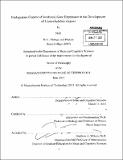| dc.contributor.advisor | Alexander van Oudenaarden. | en_US |
| dc.contributor.author | Ji, Ni, Ph. D. Massachusetts Institute of Technology | en_US |
| dc.contributor.other | Massachusetts Institute of Technology. Department of Brain and Cognitive Sciences. | en_US |
| dc.date.accessioned | 2013-09-24T19:42:11Z | |
| dc.date.available | 2013-09-24T19:42:11Z | |
| dc.date.copyright | 2013 | en_US |
| dc.date.issued | 2013 | en_US |
| dc.identifier.uri | http://hdl.handle.net/1721.1/81090 | |
| dc.description | Thesis (Ph. D.)--Massachusetts Institute of Technology, Dept. of Brain and Cognitive Sciences, 2013. | en_US |
| dc.description | Cataloged from PDF version of thesis. | en_US |
| dc.description | Includes bibliographical references (p. 127-137). | en_US |
| dc.description.abstract | Studies in the past decade have established gene expression as an inherently variable process. Accompanying this exciting finding is a fundamental question: how do physiological events, such as cell fate specification, proceed so robustly in the face of gene expression variability? In this thesis, I took a fresh attack at this question by examining the control of variability in the context of the stereotyped development of the nematode C. elegans. Specifically, I focused on the regulation of a Hox gene by the Wnt signaling pathway in a single C. elegans neuroblast. Analogous to vertebrate neural crest cells, Hox gene expression determines the migratory direction and the subsequent fate choices of cells that descend from the original neuroblast. Intrigued by the earlier observation that perturbation to Wnt signaling disrupts the wild-type stereotypy in migratory decision, I speculated that variable gene expression may underlie the partial penetrance in the mutants and subsequently questioned what mechanism safeguards against variability in the wild type. Combining single-cell transcript counting with genetic manipulation, I quantified the variability in Hox gene expression in the Q neuroblasts in both the wild type and a series of Wnt signaling mutants. Interestingly, I observed increased expression variability in a number of mutants and an overall complex relationship between expression variability and mean expression level. Distinct features in the gene expression profile embarked me on a search for network interactions, leading to the discovery of multiple novel feedback loops within the Wnt pathway. Applying computational network inference, I revealed a network of interlocking positive and negative feedback loops, which I subsequently show to have a topological advantage in dampening stochastic noise in gene expression. | en_US |
| dc.description.statementofresponsibility | by Ni Ji. | en_US |
| dc.format.extent | 137 p. | en_US |
| dc.language.iso | eng | en_US |
| dc.publisher | Massachusetts Institute of Technology | en_US |
| dc.rights | M.I.T. theses are protected by
copyright. They may be viewed from this source for any purpose, but
reproduction or distribution in any format is prohibited without written
permission. See provided URL for inquiries about permission. | en_US |
| dc.rights.uri | http://dspace.mit.edu/handle/1721.1/7582 | en_US |
| dc.subject | Brain and Cognitive Sciences. | en_US |
| dc.title | Endogenous control of stochastic gene expression in the development of Caenorhabditis elegans | en_US |
| dc.title.alternative | Regulatory network controlling gene expression during animal development | en_US |
| dc.type | Thesis | en_US |
| dc.description.degree | Ph.D. | en_US |
| dc.contributor.department | Massachusetts Institute of Technology. Department of Brain and Cognitive Sciences | |
| dc.identifier.oclc | 858276565 | en_US |

